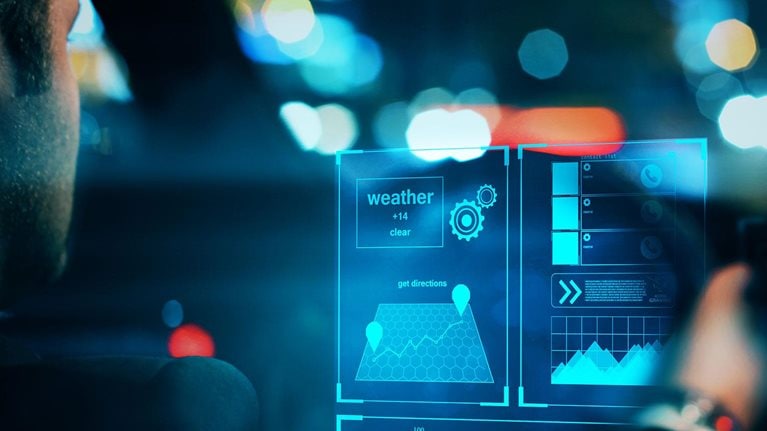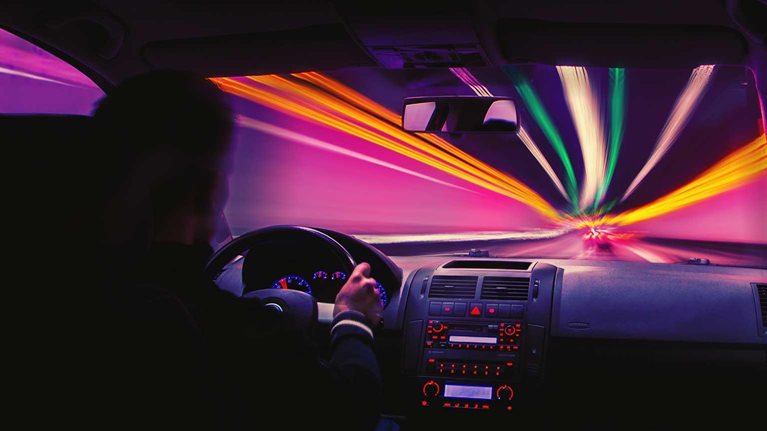After decades as a niche feature, telematics is merging into the automotive mainstream (see sidebar, “Defining telematics and usage-based insurance”). Research on car-data-monetization trends and characteristics suggests that this value pool could be as large as $750 billion by 2030. While current adoption rates remain low across markets, they could grow significantly through the first part of the next decade, according to the GSM Association, an organization comprised of mobile-network operators. There are two reasons for this. First is the increased willingness of governments to mandate specific telematics services, such as emergency-call capabilities, which is already happening in the European Union and Russia. Second is the increasing appetite from consumers for greater connectivity and intelligence in their vehicles.
Car telematics has the potential to increase road safety, improve driving behavior, align insurance premiums with actual need via usage-based insurance (UBI), and boost car-insurance-industry profitability. It also seems clear that telematics can bring additional benefits to individuals, corporations, and governments beyond insurance and road-safety improvements. Examples include driving-style improvements to boost fuel economy, location-based services such as stolen-vehicle recovery, real-time tracking, vehicle-finder services, vehicle-maintenance alerts, and fuel and routing optimization.
Today’s adoption levels remain below 20 percent
In the current market-driven, voluntary-use telematics landscape, no country has attained adoption rates that exceed 20 percent (Exhibit 1).

The technology’s benefits become evident even at these niche levels. For example, most users cite antitheft, lower insurance premiums, and improved driving behavior as key benefits of telematics today. Its use in the United States reached about 20 percent in 2016, Italy saw 17 percent, and Singapore 9 percent. That same year, global UBI adoption made possible by telematics expanded to 14 million policies.1
While virtually all markets currently feature voluntary car-telematics systems, regulators in many countries want to mandate the technology in specific circumstances. For instance, the European Union seeks e-assistance systems in case of accidents. The eCall system, mandatory for all new EU vehicles as of March 2018, should speed up emergency-response times by 40 percent in cities and 50 percent in rural areas—in the process reducing the number of fatalities by at least 4 percent. Russia mandated a similar system for new cars by the end of 2017, while Mexico has sought mandatory radio-frequency-identification (RFID) tags to bolster vehicle-antitheft systems. Many other countries, including China, Germany, Singapore, and South Africa, have voluntary systems that provide UBI incentives.
The overall advantages of car telematics are proportional to the technology’s adoption rates in given markets (Exhibit 2). In many cases, it takes significant scale to unlock specific benefits. For instance, road-safety-related advantages begin at low telematics-adoption rates (20 percent or less) and tend to increase more rapidly as rates grow. However, other advantages, such as traffic optimization, require much greater adoption levels (roughly 40 percent or more), while smart-city infrastructure benefits need an even greater telematics presence (almost 80 percent).

Connecting the connected car
Today, car owners have multiple options for outfitting their vehicles for telematics services. These range from do-it-yourself add-on devices to professionally installed systems. Multiple players have begun to offer customers telematics devices and solutions. For instance, some insurance companies bundle telematics devices with their motor-insurance policies, car manufacturers may offer built-in telematics devices and customized services to differentiate their offerings from other manufacturers, and certain fleet operators leverage telematics devices to optimize and manage a network of cars.
What follows are descriptions of key types of telematics devices. The final two typically require professional installation.
Smartphone app. Perhaps the easiest and most straightforward connected-car option is an app that turns your phone into both a telematics sensor and transmitter. Typically capable of autonomously detecting trips, these apps offer trip scoring based on driving behavior, habits, and the driving context, although the quality of the data collected may not be the best. Apps usually issue proactive notifications such as traffic alerts, weather alerts, and service workshop locations. They are also used in tandem with hardware solutions to enhance service offerings such as warnings, driving tips, reporting, and gamification. They tend to be modular, fully configurable, and work on open platforms to facilitate additional app development.
Would you like to learn more about the McKinsey Center for Future Mobility?
Smartphone apps shine with respect to their usability in hot conditions and end-user ease of setup but do less well providing e-assistance services or serving as driving-score monitors and usage-based-insurance devices. Their robustness against tampering and road-safety capabilities are both extremely low.
To build customer engagement, they include the capability to develop unique loyalty and gamification systems, as well as e-commerce and social functions, and provide distracted-driving detection to prevent crashes.
Cigarette-lighter plug. This device plugs into the vehicle’s cigarette-lighter slot to collect and transmit data via a built-in subscriber-identity-module (SIM) card. Lighter plugs are compact, easy to install, and come equipped with instant power backups. They feature a microprocessor, a six-axis internal integrated accelerometer and gyroscope, as well as a Bluetooth module, a global-system-for-mobile-communications (GSM) module with 2G, 3G, or 4G capabilities, and an internal antenna and multiconstellation global-navigation-satellite-system (GNSS) receiver. An emergency button enables the driver to contact assistance and speak with an operator through a loudspeaker.
These devices score well in ease of setup and outperform regarding usability in hot conditions, e-assistance services, and road safety. They receive average marks for driving scores and usage-based-insurance services but below-average ratings on tampering resistance.
Smart tag. The tag mounts on the dashboard via adhesives and collects and transmits data using a built-in SIM card. It has a three-axis inertial sensor and Bluetooth networking capability, and its primary battery has a four-year shelf life. Users can also equip it with GNSS and solar-harvesting capabilities and access the collected data either through an app or via a web page.
Tags usually lack robust tamper-resistance safeguards but do better on usability in hot conditions, e-assistance, and end-user ease of setup. They tend to be average in road-safety considerations and in driving score or usage-based insurance roles.
OBD device. Designed to plug into a car’s onboard diagnostic (OBD-II) port, the device taps into key vehicle electronic systems and transmits data via a built-in SIM card. It includes a microprocessor and a six-axis internal integrated acceleration sensor and gyroscope. Other features include a Bluetooth chip, an integrated GNSS multiconstellation receiver, and GSM 2G, 3G, or 4G mobile connectivity. Users can access data through an app or a web page.
While not excellent in any area, OBD devices score best in hot-condition usability. They provide average service when it comes to road safety, driving scores, usage-based insurance, e-assistance, and ease of setup, and do poorly on tamper resistance.
Battery line. The battery line connects to the car’s battery and to offboard systems via a SIM card. It features an easy-to-install telematics on-board unit equipped with a lithium-ion backup battery, and consists of an embedded microprocessor and an integrated six-axis accelerometer and gyroscope. Other features include an optional Bluetooth module, a global system for GSM module with 2G, 3G, or 4G capabilities and an internal antenna, as well as an e-SIM and multiconstellation GNSS receiver.
The battery line provides relatively strong functionality across the assessed areas. It offers exceptional road-safety performance, driver score, usage-based-insurance capabilities, and e-assistance services. It also provides average performance on robustness against tampering, ease of setup, and usability in hot conditions.

How carmakers can compete for the connected consumer
Windshield-mounted device. Professionally installed on the windshield, these devices feature additional sensors to provide extra sources of data. Comprised of a small telematics windshield on-board unit equipped with a backup battery, these devices also feature an embedded microprocessor GNSS with an internal antenna, six-axis integrated accelerometer and gyroscope, as well as a GSM/GPRS quad-band module with an internal antenna, eSIM, and backup battery. The units feature voice controls, an integrated microphone, a speaker, two volume controls, and an emergency button. Some are also available with a camera.
They offer superior road safety, e-assistance, tamper resistance, driving scores, and usage-based insurance services, as well as above-average hot condition usability and setup ease.
Black box. Professionally installed in the vehicle cabin, the black box includes additional sensors such as accelerometers for precise measurements. The most advanced black boxes feature an embedded microprocessor, a Bluetooth module for connectivity, a multiconstellation high-performance GNSS, a quad-band GSM/GPRS module with integrated antenna, eSIM, and a six-axis accelerometer and gyroscope. Units can include Bluetooth driver cards for registration and authentication. They may also offer a hands-free loudspeaker for emergency or road-assistance calls and even offer engine start inhibitors for theft protection.
Perhaps the most capable telematics device among those listed here, the black box provides superior performance in every assessed area except ease of setup. It receives the highest possible rating on road safety, driving score, usage-based insurance, e-assistance, usability in hot conditions, and robustness against tampering.
Interoperability standards needed
To ensure interoperability across the many platforms that currently or will soon offer telematics access, stakeholders such as insurers and technology and services providers need to establish and adhere to standards. These include data standards, as well as ones for key mechanical and electronic features. Data requires generation standards for mandatory services, for example, while mechanical hardware will likely need minimum crash-resistance standards. Electronic systems should meet power-management and protection standards, as well as backup-battery performance requirements. Other pertinent standards might focus on installation practices, firmware upgrades, communications, device diagnostics, and climate-resistance measures.
Achieving these standards will likely require device makers to generate trip data and event data in many of their products (Exhibit 3). Trip-data generation (for example, time stamps, locations, speed, and event duration) will probably become a must-have feature of most telematics devices. Many will also need the capability to track event data, such as accelerations and decelerations, g-forces (such as from cornering or accidents), idle time, lateral movement, and other indicators.

Telematics continues to gain worldwide momentum, as the industry introduces an expanding variety of new devices. Given the expected regulation-driven increase in device adoption, the sector has reached a tipping point. To achieve expected use levels, it needs to enforce standards that enable cross-platform interoperability.


